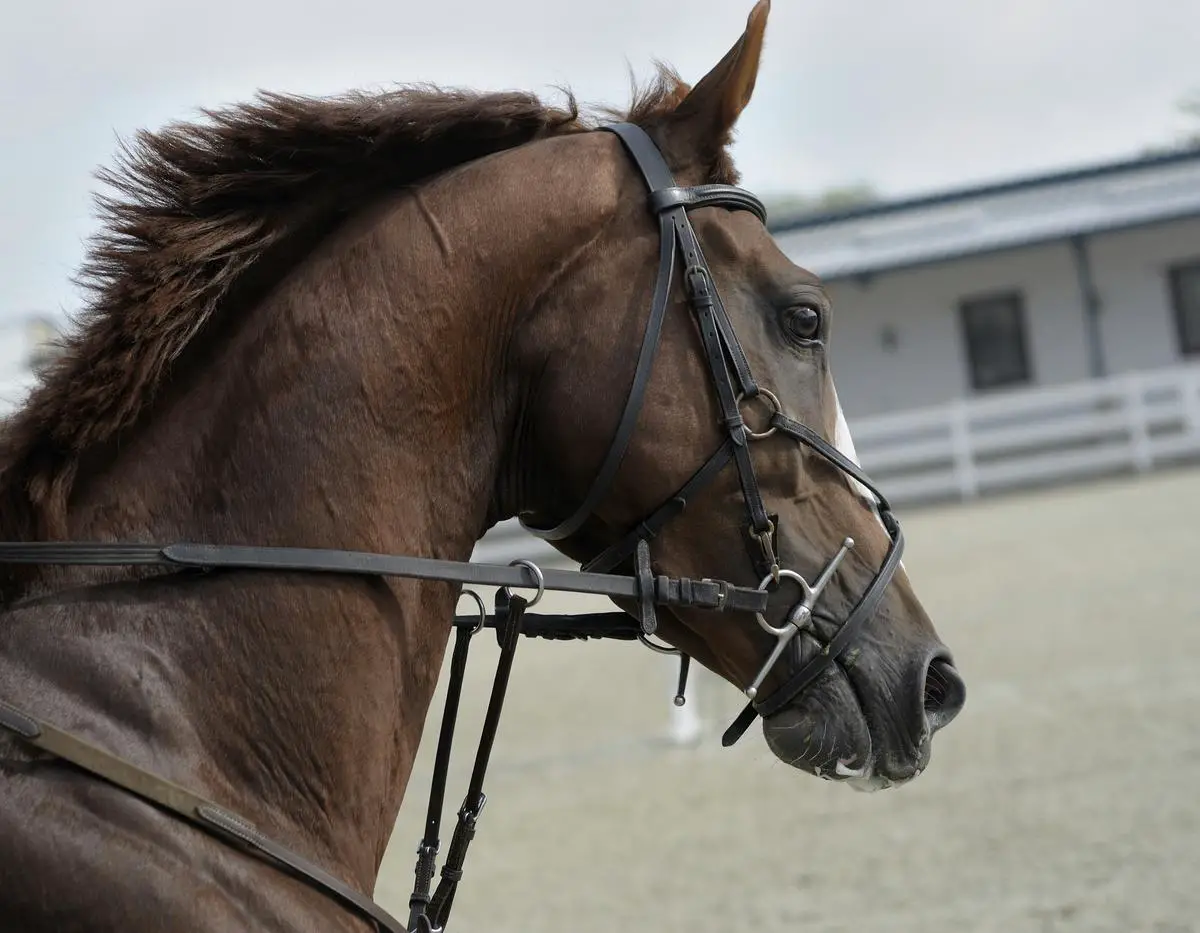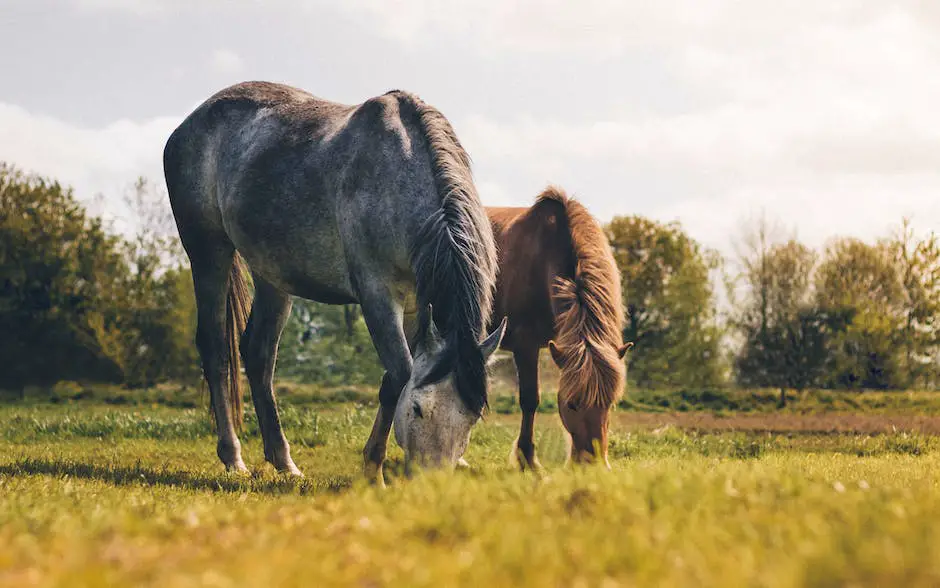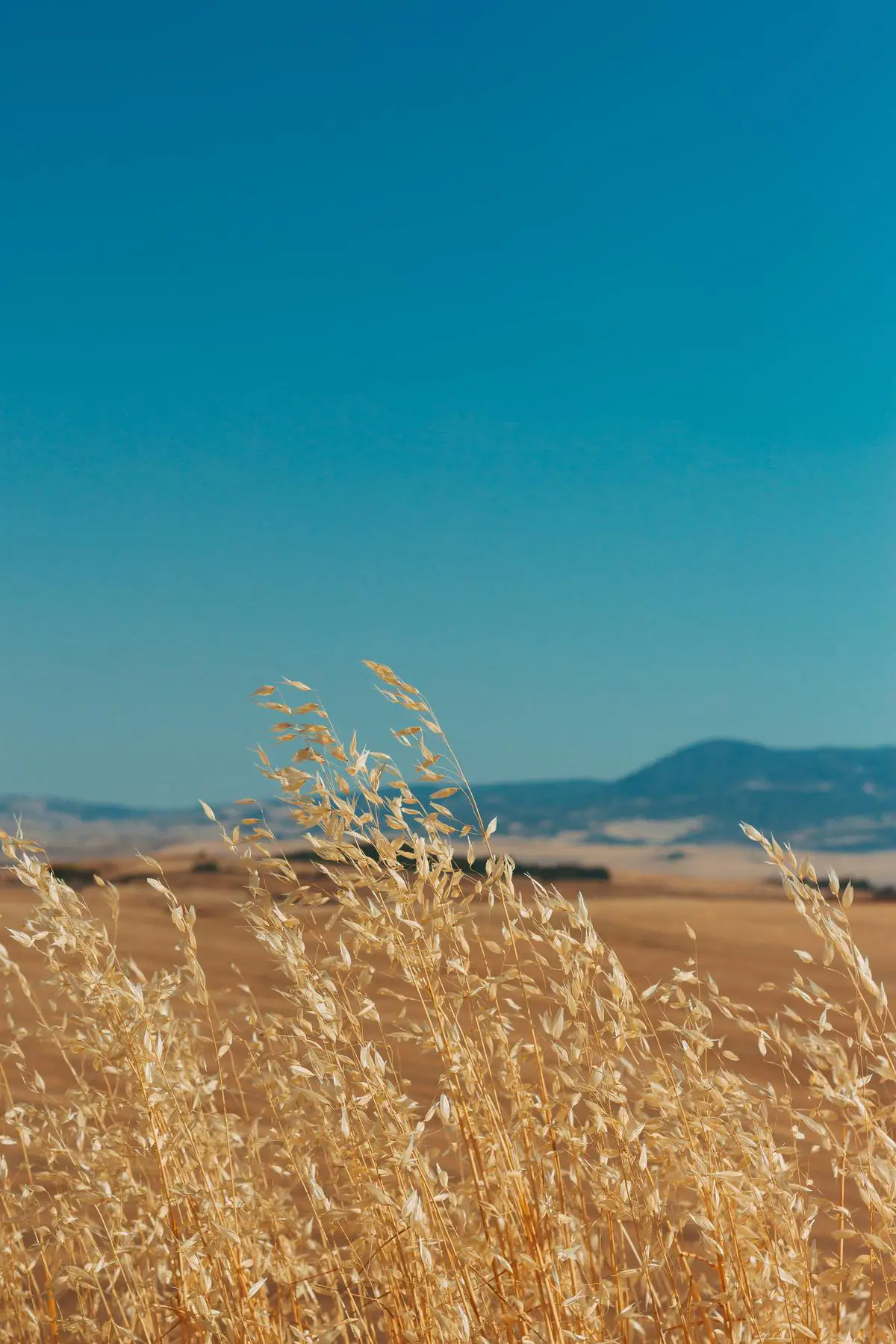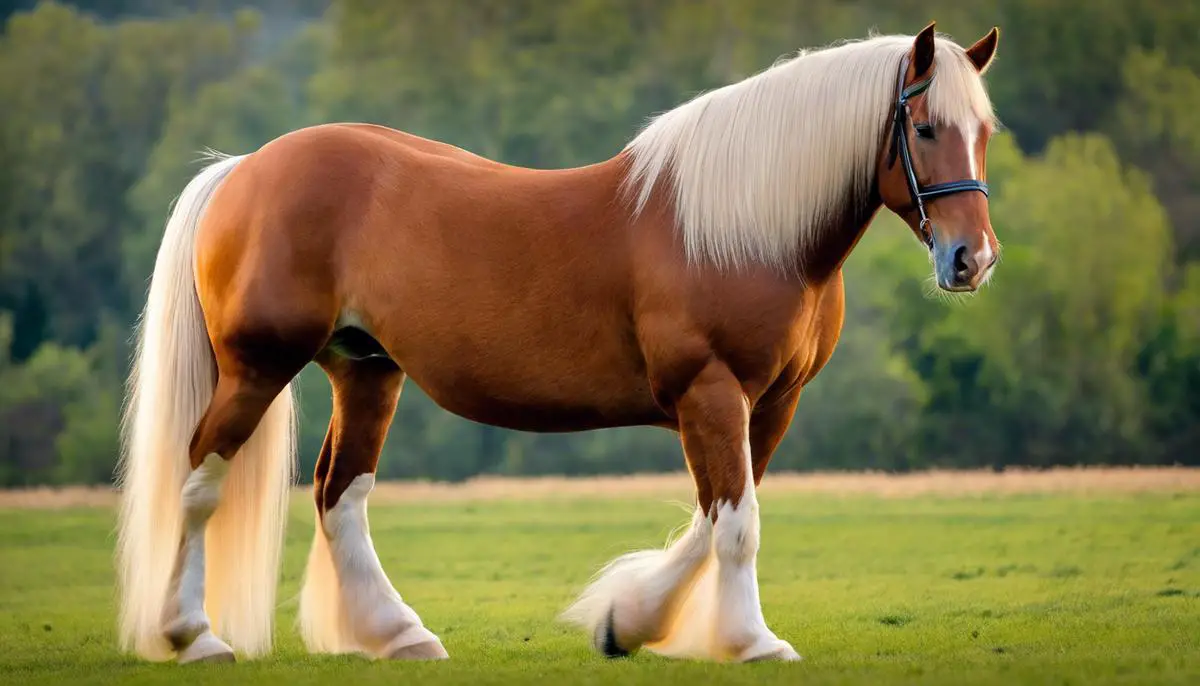The majestic world of horses is incredibly diverse, with every breed reflecting a distinct temperament and set of abilities. Among the myriad types, cold blooded draft horses, renowned for their robust physique and unparalleled strength, have created a niche for themselves. Distinguished by their characteristics – utmost calm composure coupled with immense pulling power – these breeds are truly majestic. This exploration illustrates their inherent traits, their inception and journey through time, their role in modern society and the effective care regimens that ensure their optimal health and longevity.
Table of Contents (Horspedia)
Understanding Cold Blooded Draft Horse Breeds
Cold Blooded Draft Horse Breeds – Muscular Giants of the Equine World
What sets cold blooded draft horse breeds apart from other equine breeds? Often towering over their warmer blooded cousins, these supreme heavyweights in the world of horses are an interesting breed group to explore. Whether you’re a horse enthusiast or an equine novice, a delve into the world of draft horses is sure to be enlightening.
So, what exactly constitutes a cold blooded draft horse breed? One might initially think this term refers to their body temperature, but that’s a common misinterpretation. Instead, in horse lingo, ‘cold blooded’ refers to the temperament, lineage, and primary uses of these breeds. Cold blooded horses are generally known for their calm, easy-going temperaments, strength, size and resilience, making them well suited for tasks requiring muscle and endurance.
Larger than most other horse breeds, draft horses often stand between 16 to 19 hands high, with a weight that can exceed 2,000 pounds. Having a hefty physique, draft horses have built a reputation as workhorses, often being employed in agricultural tasks and other heavy-duty roles. They have broad chests, powerful hindquarters, and large, feathered feet that lend them additional stability on heavy terrain.
There are a variety of breeds within this category, such as the Shire, Clydesdale, and the Belgian Draft, each with their unique characteristics. Shires hail from England, known for being one of the tallest horse breeds. Clydesdales, on the other hand, also originate from England, more specifically Scotland, and often the breed of choice at parades and public functions due to their distinctive appearance. Meanwhile, the Belgian Draft holds a reputation for superior strength and docility.
Contrastingly, ‘hot blood’ and ‘warm blood’ breeds refer to the more spirited horses, known for their speed, agility, and agile use in sporting events. With Arabian and Thoroughbred ancestry, hot blooded horses are utilized in racing, show jumping, and dressage, while warm blooded breeds are crossbreeds, crafting the perfect blend of the cold draft horses’ strength and the hot bloods’ speed and energy.
However, the distinction does not merely lie in the physical stature or job role. What people love most about draft horses is their gentle and patient nature. Despite their towering size, these horses are often dubbed “gentle giants.” They make fantastic beginner’s horses due to their calm demeanor and patience.
In conclusion, the world of cold blooded draft horse breeds is a fascinating one. These hardy, gentle giants hold a unique spot of honor in the diverse universe of equine breeds. Their combination of strength, patience, and resilience is unmatched, making them truly distinctive in the horse world.

Origins and Evolution of Cold Blooded Draft Horses
The Origins and Evolution of Cold Blooded Draft Horses
So, how did these majestic “gentle giants” first make their grand entrance into the equine world? The history of cold-blooded draft horses dates back centuries, potentially even millennia, and is interwoven with the human journey itself.
Early evidence of draft horses can be traced back to prehistoric Eurasian steppes. Cave paintings from this epoch depict sturdy, thick-set equines, not too dissimilar from the modern-day draft horse. It’s speculated that these early equines were utilized for a multitude of tasks, including aiding in transportation, agriculture, and warfare. Over time, as human societies grew and expanded, so did the need for more robust, hardworking horses.
The term “cold-blooded” came into existence during the middle ages. Unlike their hot-blooded counterparts, who had a fiery Templar spirit suitable for combat, cold-blooded horses were valued for their sturdy build and calm disposition. They could plow fields, pull heavily loaded carts, and work long hours without tiring, making them indispensable to agriculture and industry.
The different horse breeds that fall under the cold-blooded draft horse category, such as the Shire, Clydesdale, and the Belgian Draft, each come with their unique origin saga, steeped in the history, culture, and needs of the people and regions from whence they originated. For example, the Belgian Draft horse is speculated to have descended from the “Great Horse” used by the medieval knights of old, tailored by selective breeding to be the world’s strongest horse.
Fast forward to the industrial revolution, the role of draft horses underwent a significant shift. The invention of machines threatened their relevance, leading to a decline in their population. However, their sheer strength, endurance, combined with their calm and friendly nature, saw them repurposed into roles like forestry, pulling canal boats, and even as a helping hand (or hoof) in urban sanitation efforts.
Surprisingly, the two world wars led to a resurgence in their demand due to the shortage of fuel and mechanical failure commonplace during these periods. This renewed interest allowed for their preservation.
While we’ve entered a mechanized age, the allure of these behemoth yet gentle beasts hasn’t waned. Today, besides agricultural tasks, they find a purpose in various recreational activities, therapeutic riding programs, and competitive events showcasing their agility and strength. The evolution of draft horses, therefore, is not just about their physical evolution but also their changing roles and relevance in human society.
Thus, the story of cold-blooded draft horses is, indeed, remarkable. With a lineage that harks back to the earliest human civilizations, these gentle giants carry with them a rich legacy that continues to unfold. Steeped in a history of hard work and dedication, they have navigated the path of evolution with grace and resilience. Despite the changes and challenges over the centuries, they have retained their inherent calm, patience, strength, and have found ways to remain indispensable, whether it be in the fields or our hearts.

Photo by patwhelen on Unsplash
Noteworthy Cold Blooded Draft Horse Breeds
The first draft horses hold a history as old as our ancient history, tracing back to prehistoric times.
These early cold-blooded creatures were harnessed by early humans migrating from Eurasia, used as a source of transportation and support for agriculture and warfare.
Over time, these ancient partnerships evolved into the majestic, sturdy, and dependable draft horses we appreciate today.
As we move forward into the Middle Ages, the term “cold-blooded” emerged, initially used to categorize a type of reliable working horse with a larger size and calmer disposition.
These were horses that could withstand long hours of labor in the fields or in battle without getting overly excited or skittish.
This endurance and calm disposition were, and remain, some of the most valued traits of the draft horse.
Turning the pages of history, we see that specific breeds within the cold-blooded draft horse category took form.
Unique draft breeds such as the Shire, Clydesdale, and Belgian Draft horses became renowned for their distinct characteristics.
The Shires for being the largest of the draft horses, Clydesdales for their iconic feathering and versatility, and Belgian Drafts for their phenomenal strength and easy-going nature.
Yet, history went on and as the Industrial Revolution burgeoned, the role of these hard-working horses shifted dramatically.
Suddenly, machines seemed to overtake the work previously trusted to these gentle titans.
Our reliance on their strength waned and, as a result, so did the population of these cold-blooded draft horses.
However, they didn’t disappear into the annals of history.
Despite the rise of machines, a resurgence of draft horse demand flared during World War I and II.
Their unique traits of adaptability, strength, and calmness made them once again invaluable.
They worked in the churned-up, bomb-cratered battlefields, where machines often failed or got stuck.
Today, cold-blooded draft horses continue to carry their weight in various roles.
Whether it’s logging in woodland, ploughing fields, or parading in public spectacles, these alluring horses never cease to captivate us.
They also draw enthusiasts in therapeutic and recreational riding programs.
Their journey from prehistoric times has seen them evolve, not just in their physical characteristics, matching with human needs but also in their roles within human society.
From pulling ploughs to pulling at our heartstrings, these gentle giants have proven to be a timeless companion to mankind in many forms and their relevance remains unyielding today.
These notorious, historical, cold-blooded draft horses have truly stood the test of time.

Care and Maintenance of Cold Blooded Draft Horses
Shifting focus to the care and maintenance aspect, a key component in the upkeep of these majestic equines revolves around their diet. Being bigger than average horses, cold-blooded draft horses necessitate ample sustenance to maintain their substantial body weight. A balanced diet consisting of hay, grain, and constant access to freshwater is essential. Overfeeding can induce grave health complications like obesity, so it’s crucial to monitor their food intake closely.
Conversely, underfeeding can lead to weight loss, which can be detrimental to their well-being. It’s essential to provide a diet that maintains optimal weight, is low in sugar and starch, and high in fiber. Above all, regular vet check-ups can help ensure your horse’s health is at its prime.
Grooming is another critical aspect of caring for a cold-blooded draft horse. Not merely about hygiene and decent appearance, grooming serves to strengthen the bond between the horse and its owner. Brushing helps stimulate blood flow to the horse’s skin while helping you track any potential skin problems or unseen injuries that might occur.
Moreover, because of their active roles and huge size, these horses need regular hoof care. Their hooves should be checked, picked, and trimmed every six to eight weeks by an experienced farrier. Neglecting this can lead to discomfort and permanent damage for the horse.
Workouts are also crucial for these horses. Due to their massive size, cold blood draft horses are prone to joint-related issues. Regular and moderate exercise can help avoid these problems. One must remember to warm up their horse before any strenuous activities and cool down post-activity, to avoid any injuries or unnecessary strains.
In terms of habitat, these horses do well in a variety of climates, but adequate shelter from harsh weather is vital. They can perform exceedingly well in colder climates, justifying the “cold-blooded” name, however, they should have access to a dry, warm shelter during severely cold or stormy weather. During hotter periods, shade and plenty of fresh, cool water are critical.
Lastly, every animal needs love, care, and attention, and draft horses are no different. Despite their size and historical roles as work vehicles, they have gentle dispositions and thrive on attention. Patience, understanding, and regular interaction can make a wealth of difference in the life of your simon-pure cold-blooded draft horse.
In essence, owning a cold-blooded draft horse comes with a set of responsibilities that can be challenging but rewarding. By tending to their diet, grooming, shelter, and overall well-being, you can ensure that they live a healthy, happy, and esteemed life, rightfully earning their nickname – the “Gentle Giants”.

Cold Blooded Draft Horses in Modern Society
Now that we have a well-rounded understanding of the history, characteristics, and varying roles of cold blooded draft horses, let’s delve into their health and maintenance. Undoubtedly, owning a gentle giant entails a level of responsibility that includes ensuring they are treated with respect, care, and affection.
As any horse expert will emphasize, diet forms the backbone of a horse’s health. Draft horses are prone to obesity due to their metabolism and the stereotype that, because of their size, they can consume large amounts of feed. In reality, they require a balanced diet with high-quality hay, grains, mineral supplements, and plenty of fresh water.
An optimal body weight is crucial for these horses to maintain their health and performance. Balance is key in feeding; being underfed can lead to noticeable loss of muscle mass and overfeeding can exacerbate orthopedic issues.
Riding extends beyond the saddle. Scheduled vet check-ups are vital to assess overall equine health, detect any early signs of disease, and provide vaccinations. Grooming is a fundamental part of horse care. Besides preserving a dazzling appearance, regular grooming is a great way to appreciate your horse’s general health and state, and an excellent opportunity to strengthen the bond you share.
A horse’s hooves are paramount to their well-being. The role of a farrier is critical here; regular hoove checks and trimmings reduce the risk of issues such as laminitis, abscesses, and hoof cracks.
Much as they appreciate their stable, draft horses require exercise to avoid stiffness in the joints owing to their hefty build. Depending on their workload, adequate downtime is also crucial for recovery and regeneration of muscles.
Despite their awe-inspiring stature and strength, draft horses are gentle creatures that require the same essentials any other horse breed does: a comfortable habitat. Offering them a weather-resistant shelter for protection against varying weather conditions is simply good practice.
At the end of the day, these hardy yet tender-hearted animals require your love, care, and attention. The prominence of draft horses has transcended eras, and it is our responsibility as their caretakers to ensure their preservation for generations to come. A horse is a mirror of its owner, making cold-blooded draft horse owners among the most patient, responsible, and passionate.

Photo by alpacccca on Unsplash
The grandeur of cold blooded draft horses is undeniably timeless, an epitome of strength and composure that has withstood centuries of evolution. In contemporary society, their presence and importance have not waned, finding meaningful roles from being an impressive show horse to a diligent farm worker. Often serving as an eco-friendly alternative for various tasks, they contribute significantly to sustainable tourism, leaving minimal impact on nature. Their care, encompassing balanced diet, regular grooming and consistent physical activity, may seem demanding but is a rewarding endeavor that maintains their health and their prepossessing demeanor. The exploration of these magnanimous creatures attests to them being an enduring link between the past and the present, continuing to contribute their strength and grace to the world.
